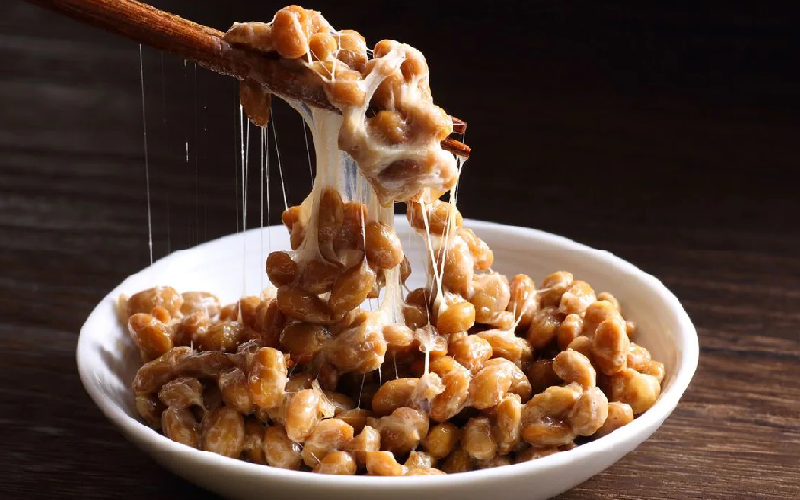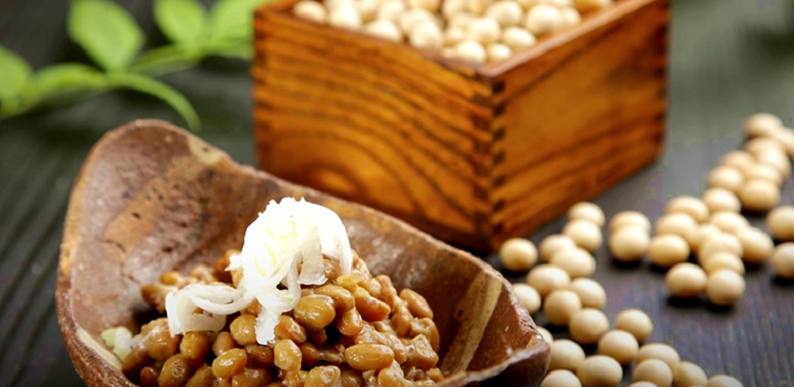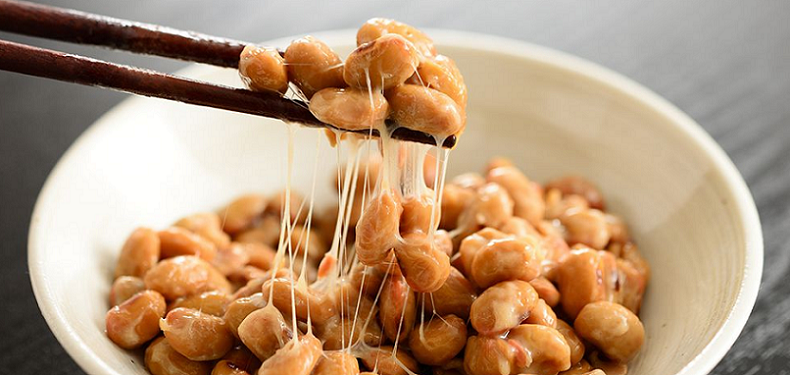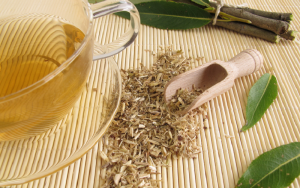
Natto serves as a staple of Japanese cuisine, and is a plant that’s rapidly gaining global recognition for its superfood status. In the Western world, it’s often an uncharted territory of the culinary map, partly due to its unique taste and texture, and partly due to a lack of knowledge about this intriguing food.
Contents
Introduction to Natto
Natto is an underrated culinary gem from the Land of the Rising Sun. It is a quintessential part of the Japanese diet, known for its powerful health benefits and its unique, acquired taste. If you’re new to the world of natto, let’s take a moment to understand what it is and its historical significance.
Brief Description of Natto
Natto is a traditional Japanese food made from fermented soybeans. It is typically characterized by its slimy texture and strong, distinct aroma that can be quite surprising to the uninitiated. The fermentation process, which involves a bacterium called Bacillus subtilis, lends natto its nutritional prowess, including a rich content of probiotics and a unique enzyme known as nattokinase. While it might not be an instant favorite, natto’s distinctive characteristics have been celebrated in Japan for centuries.
Origin and History of Natto in Japan
Natto’s roots in Japanese culture can be traced back over a thousand years. According to some historical records, it was first mentioned during the Heian period (794-1185 AD) in a diary belonging to a noblewoman, where she described it as a “rare delicacy”. Some even argue that natto dates back to the prehistoric Jomon period (14,000-300 BC), although these claims are harder to substantiate.
The process of making natto originated from an accidental discovery when boiled soybeans were stored in rice straw, which naturally contains Bacillus subtilis. Over time, these soybeans fermented and transformed into what we now know as natto.
Today, natto is a staple in Japanese households, often enjoyed as a hearty breakfast dish with rice, miso soup, and fish. Despite its polarizing taste and texture, it has withstood the test of time, continuing to be a favorite for many due to its cultural significance and numerous health benefits [1].

Unveiling the Nutritional Power of Natto
Natto’s status as a superfood is not without merit. It is packed with an impressive array of nutrients that make it a powerhouse of health benefits. Let’s delve into the nutritional profile of natto and discover what makes it stand out.
Breakdown of Nutrients in Natto
Natto is a nutritional goldmine, teeming with vitamins, minerals, proteins, and other essential nutrients that contribute to its health-boosting reputation.
Vitamins and Minerals
Natto is a rich source of many vitamins and minerals. It’s particularly high in vitamin K, an essential nutrient that plays a crucial role in blood clotting and bone health. Natto contains both Vitamin K1 (found in plants) and K2 (found in fermented foods and animal products), with the latter being particularly beneficial for cardiovascular health.
In addition, natto is loaded with vitamins B2 (riboflavin), B6, and B9 (folic acid), all of which are vital for energy production and brain health. It is also an excellent source of minerals like iron, calcium, magnesium, and zinc.
Protein and Fiber Content
Natto is a protein powerhouse, making it an excellent choice for vegetarians, vegans, or anyone looking to boost their protein intake. Moreover, the protein in natto is complete, meaning it contains all nine essential amino acids that our body cannot produce on its own.
Furthermore, natto is rich in dietary fiber, particularly soluble fiber, which aids in digestion and helps regulate blood sugar levels.
The Magic of Nattokinase
One of the unique aspects of natto is its content of nattokinase, an enzyme produced during the fermentation process. Nattokinase is believed to have a range of health benefits, including improved blood circulation and potential blood clot prevention [2].
Caloric Value of Natto
Despite its dense nutritional profile, natto is relatively low in calories. A standard serving (around 50 grams) of natto contains approximately 110 calories. This makes natto a nutrient-dense, low-calorie food option that can be a part of a balanced diet.

Health Benefits of Natto
The nutritional profile of natto translates into an array of health benefits that are as impressive as they are varied. From enhancing digestive health to promoting bone strength, let’s delve into the numerous ways natto can contribute to your well-being.
Probiotic and Digestive Health Benefits
Natto is a fermented food, and like other fermented foods, it’s a fantastic source of probiotics. Probiotics are beneficial bacteria that promote a healthy gut microbiome, supporting digestion and nutrient absorption. Regular consumption of natto can contribute to a healthy digestive system and may help alleviate conditions like constipation and Irritable Bowel Syndrome (IBS).
Cardiovascular Health Benefits
One of the standout benefits of natto is its potential impact on cardiovascular health. The nattokinase enzyme that natto contains is known to help prevent the formation of blood clots, which can reduce the risk of heart disease and stroke. Furthermore, the high Vitamin K2 content in natto can help prevent arterial calcification, a major risk factor for heart disease.
Bone Health Benefits
Natto is a great source of both Vitamin K2 and calcium, two crucial nutrients for bone health. Vitamin K2 plays a significant role in the body’s calcium regulation, helping to ensure that calcium is directed to the bones where it’s needed, rather than being deposited in the arteries. This makes natto a beneficial food for maintaining bone density and preventing conditions like osteoporosis [3].
Immune System Boosting Properties
The high content of vitamins and minerals in natto, along with its probiotic properties, make it an excellent food for boosting the immune system. Regular consumption of natto can contribute to overall immune health, helping to ward off common illnesses and infections.
Benefits for Skin and Hair Health
The nutrients in natto also contribute to healthier skin and hair. Its high protein content promotes hair growth and strength, while its array of B vitamins and minerals like zinc support skin health, contributing to a clear, glowing complexion [4].
From this wide range of health benefits, it’s clear that natto isn’t just a fascinating food with a unique taste and texture. It’s also a nutritional powerhouse that can contribute significantly to your overall health and wellness.

The Unique Taste and Texture of Natto
While natto’s health benefits are impressive, it’s the taste and texture that often create a hurdle for those new to this superfood. As with many foods, acquiring a taste for natto might take some time, but understanding its flavor profile and unique texture can help in this journey.
Describing the Flavor Profile of Natto
Natto has a distinct flavor that’s hard to liken to any other food. It carries a deep, umami taste that’s often described as earthy, nutty, and slightly yeasty. Some liken the flavor to a strong aged cheese. There’s also a hint of bitterness that can be more pronounced in certain varieties of natto.
While this description might sound appealing to some, it’s important to note that natto’s flavor is quite potent and might take some getting used to. But remember, many beloved foods, like coffee or dark chocolate, are acquired tastes too.
Understanding the “Sticky” Texture
The texture of natto is perhaps its most notorious characteristic. Upon opening a packet of natto, you’ll be greeted with a sticky, slimy, web-like consistency. This is due to a beneficial type of bacteria present in natto called Bacillus subtilis, which produces a sticky substance during fermentation. This texture, while off-putting to some at first, is a key part of the natto experience [5].
Combating the Initial Aversion: Acquiring the Taste for Natto
It’s not uncommon for first-timers to be taken aback by natto’s flavor and texture. But don’t let your initial reaction deter you! Acquiring a taste for natto is much like getting used to other unique foods—it takes time and a bit of experimentation.
Try pairing natto with other familiar flavors to start with. Many people enjoy natto mixed with soy sauce, mustard, or even mixed into a bowl of hot rice, which can mellow its strong flavor and make the texture more palatable. With time, you may come to appreciate, and even crave, the unique taste and texture of this Japanese superfood.
Incorporating Natto into Your Diet
Once you’ve acquired a taste for natto, or if you’re adventurous and ready to dive right in, there are countless ways to incorporate this superfood into your diet. Natto can be enjoyed traditionally, as it’s often served in Japan, or creatively adapted to fit Western palates.
Traditional Japanese Ways to Enjoy Natto
In Japan, natto is often consumed as a breakfast food. Let’s explore a couple of the traditional ways it’s enjoyed.
Natto and Rice: The Classic Combo
Perhaps the most common way to eat natto is mixed with steamed rice. A typical Japanese breakfast might include a bowl of natto over rice, often topped with green onions, soy sauce, and sometimes a raw egg. This combination melds the flavors together, making the natto more palatable for those new to its taste.
Natto in Miso Soup
Another traditional way to enjoy natto is in miso soup. The warm, savory broth of the soup can help to mellow out the strong flavor of the natto, while the fermented soybeans add a nutritious punch to the meal.
Creative Natto Recipes for the Western Palate
While traditional methods are a great way to enjoy natto, don’t be afraid to get creative. Here are a couple of Western-inspired ideas for incorporating natto into your meals.
Natto Pizza
Yes, you read that right. Try sprinkling natto on top of a pizza before baking it. The heat can reduce some of the sliminess of the natto and the combination with cheese and other toppings can create a unique fusion of flavors.
Natto Pasta
Another creative way to enjoy natto is by mixing it into a pasta dish. The natto can add a unique twist to a simple aglio e olio (garlic and oil) pasta or even a carbonara. The umami flavor of the natto complements these dishes nicely.
Tips for Buying and Storing Natto
Natto is often found in the frozen section of Asian grocery stores, particularly those that stock Japanese products. It usually comes in small Styrofoam containers with separate packets of soy sauce and mustard. When choosing natto, look for products with minimal additives.
Once home, natto should be kept in the refrigerator or freezer. While it can be stored at room temperature for a short time, refrigeration ensures it stays fresh longer.
Whether you prefer to stick with traditional methods or experiment with more creative dishes, there’s a wealth of ways to enjoy natto. In the next section, we’ll tackle some common concerns and misconceptions surrounding this unique superfood.
References
[1] Natto Guide: Nutrition, Benefits, Side Effects, and More
[2] Nutritional Health Perspective of Natto
[3] What The Heck Is Natto And Why Is It So Healthy?
[4] Nutritional and Health Perspective of Natto: A critical review
[5] What Is Natto — and Should You Try It?







